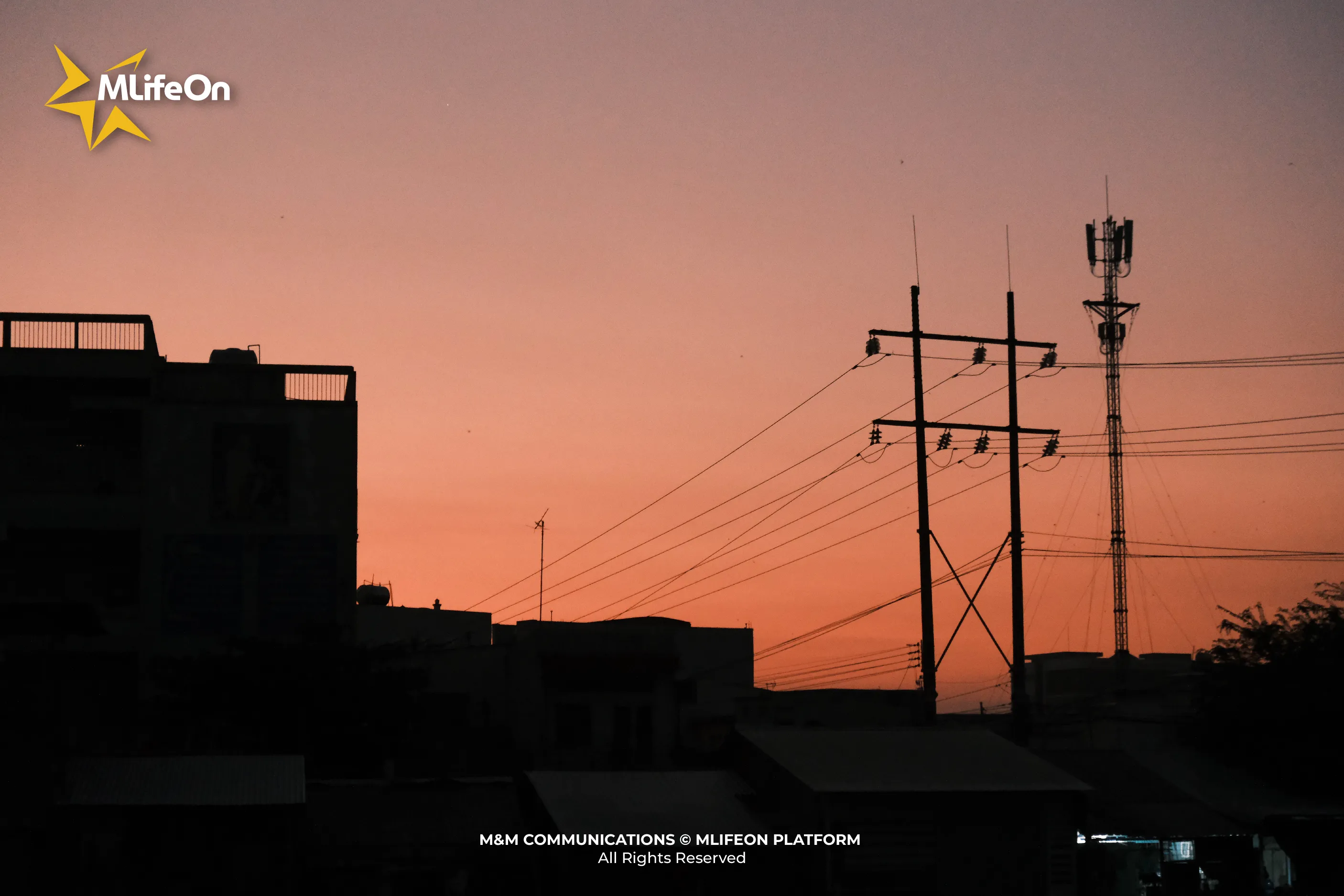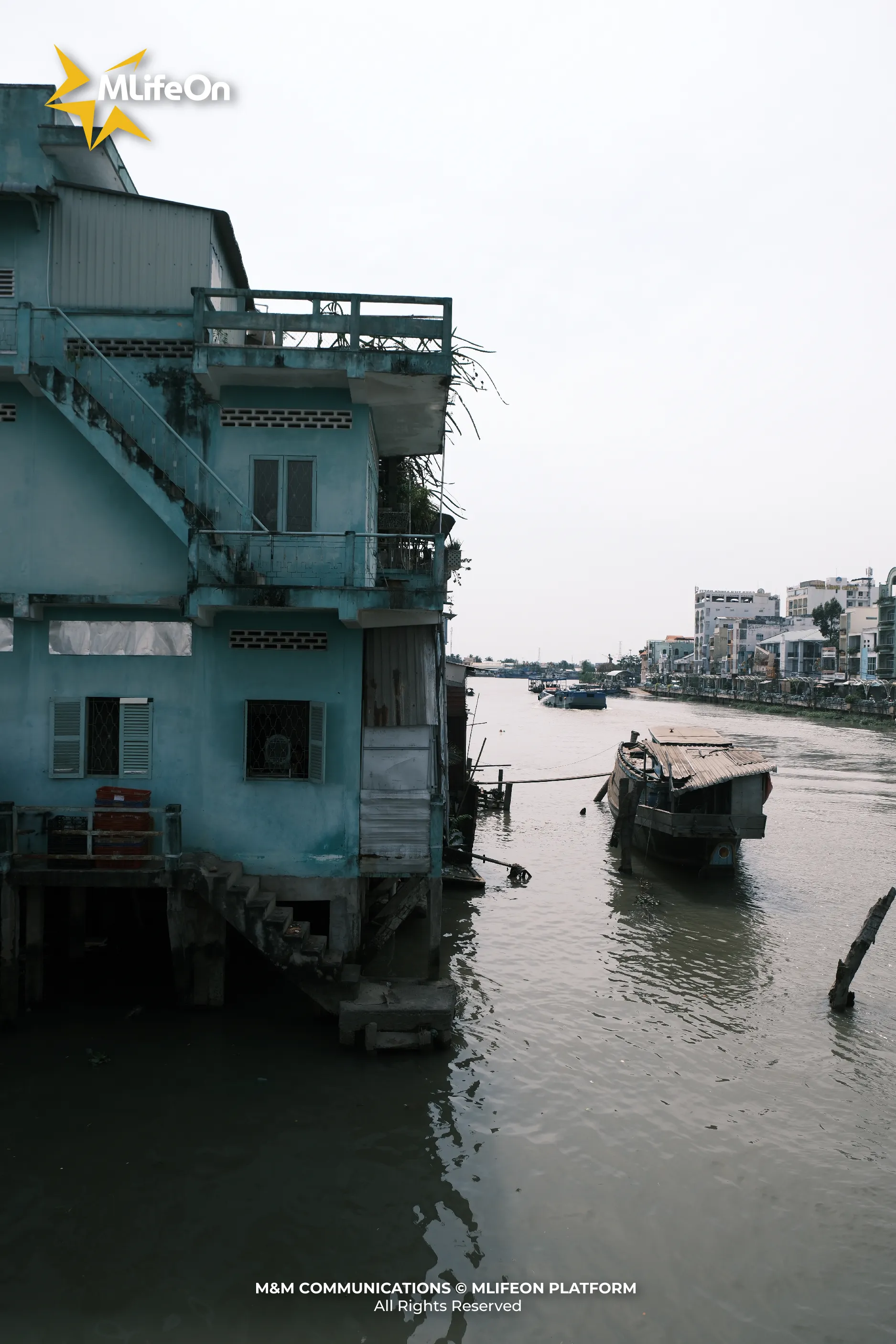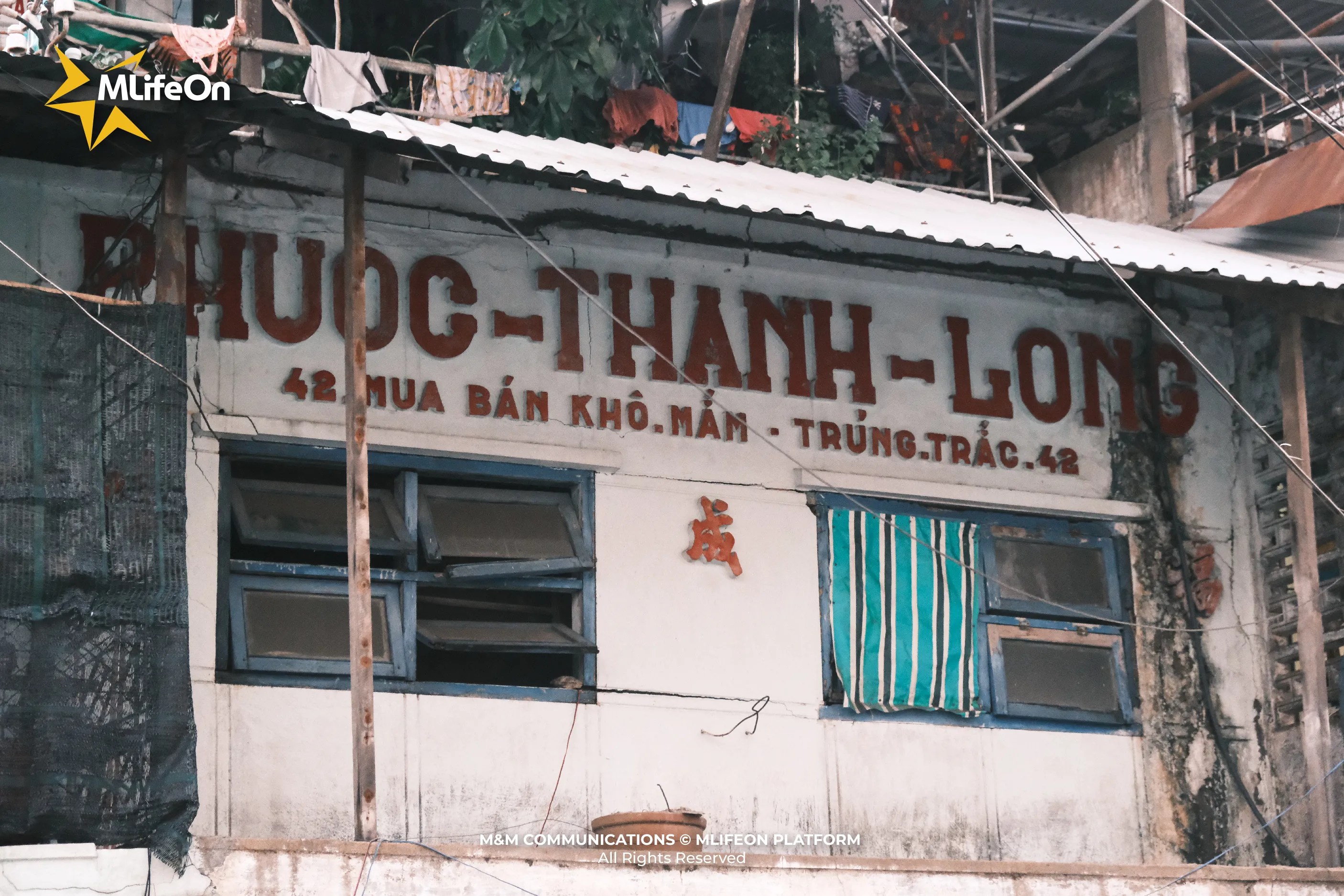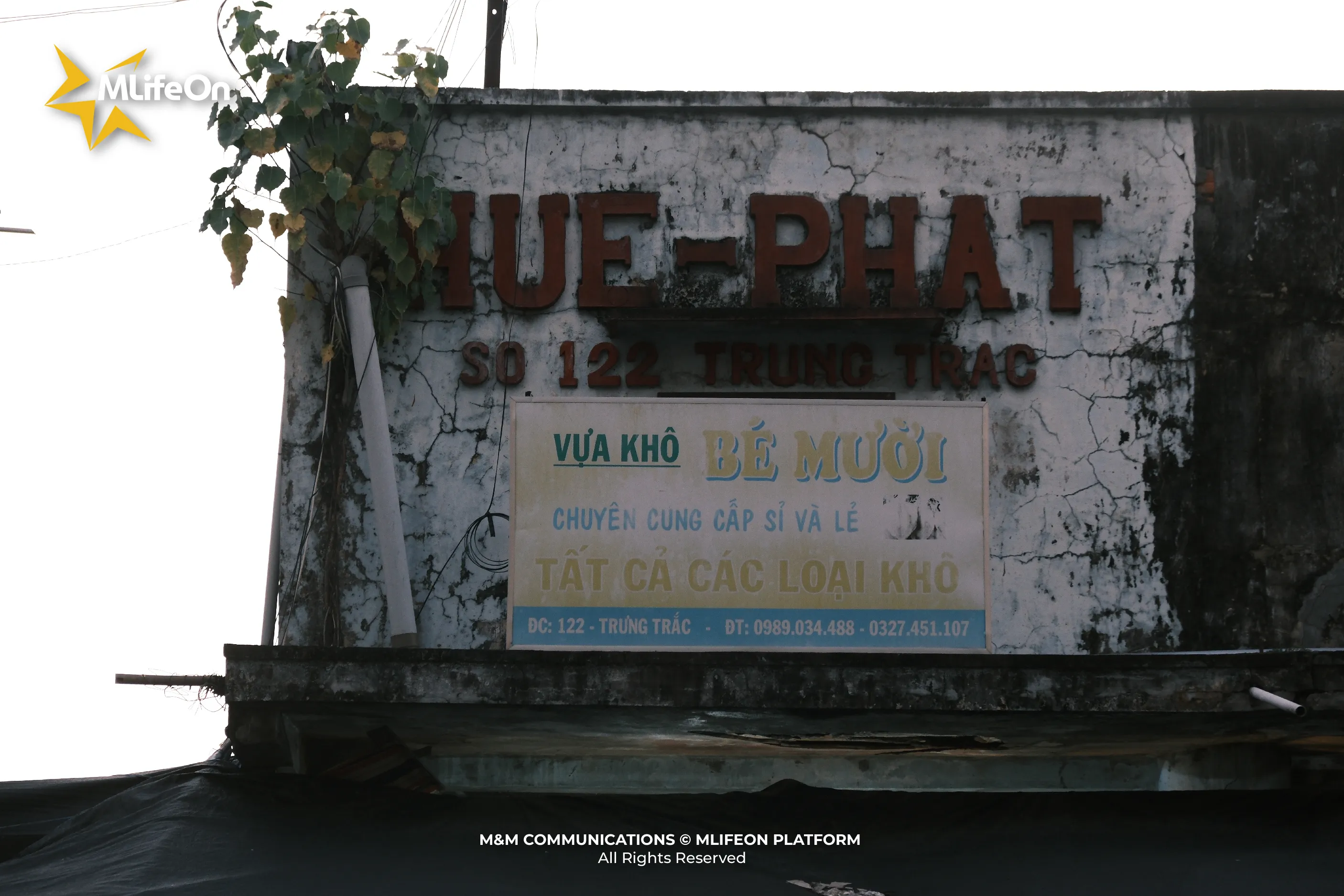From Ho Chi Minh City, we journeyed along Highway 1A to reach My Tho - known as the capital of Tien Giang province and once renowned as "My Tho, the great city" in days of yore.
After nearly 2 hours of riding through areas like Ben Luc, Tan An, and Tan Huong, we arrived just in time as My Tho was waking up.
The sun was just rising, and My Tho resembled a shy young girl, still half-asleep, trying to hide in the lingering darkness, yet unable to conceal the rosy cheeks slowly blushing across the sky.

My Tho welcomed us with gentle weather at the beginning of the year, along with the fresh air and the charming scenery typical of the Mekong Delta.
From Quay Bridge, along the Bao Dinh river, appearing before our eyes was a row of houses nestled closely together by the riverside.
While these houses lacked uniformity in architectural style or color, standing side by side, they created a harmonious scene. From afar, the scenery resembled a watercolor painting, captivating our eyes as we walked towards it.

Observing closely the row of houses along the riverbank, we couldn't help but be surprised to discover that each house had two facades - one facing the river, and the other facing the small road behind.
Perhaps these houses were originally built with two facades? Or was it only after the country was liberated and opened up that they adorned themselves with the attire of a new era, taking on their distinctive appearance as seen today.
For My Tho, waterways have always been the main arteries of trade and transportation, so houses were naturally oriented towards the river. The river-facing facades of these houses have existed since the early days. As for the entrances and facades facing the road, perhaps they were "born later" when My Tho felt the need to adapt to the changes of a new era - an era of peace, openness, and comprehensive development.
Through the appearance of each house, one can gain further insight into the riverside life of the people here, as well as their methods of trading, exchanging goods, and preserving the longstanding way of life of this region.
At first glance, it's hard to tell exactly when these houses were built. However, one can easily sense that they all bear the mark of time through their slightly weathered, peeling paint and the presence of old signs.
No longer exuding the sleek, fresh appearance of the golden era, the old signs above each house now seem subdued, silent amidst the changes of the modern era. The trendy fonts of the past, once popular on newspapers, posters, signs,... before the Liberation, have now become relics in the memories of many.


Looking at these old signs casting reflections on the river, creating a shimmering, ephemeral illusion that vanishes whenever a boat passes by, we can almost envision the old charm of the old My Tho.
As a bustling trading hub on the river between the provinces of the Mekong Delta and the Cho Lon (Big Market) area of Saigon, My Tho's waterways are always teeming with boats from morning till night. Along both sides of the river, shops were constantly crowded with people and goods, and there were a few traders leisurely chatting while waiting for their goods to be loaded onto the shore.
The rhythm of old My Tho is the rhythm of the river, of boats, and of trading. Growing up in this special and lively rhythm are relationships and stories that are still being told until this day.
The waterways have become a meeting place, a place for conversation, for exchange, for building relationships, as well as for preserving the stories that people often tell each other.
In addition to the old signs, new signs with modern fonts and eye-catching colors of the new era are also appearing on many houses here.
Looking at the increasing number of new signs gradually replacing the old ones, we seem to see our own reflection in them - a young and new generation still learning to grow up and mature as the older generations age.
Although they may look "youthful" and "vigorous," the new signs lack the "experience" and "sturdiness" of the old ones. Because when they first appeared here, the old signs were probably already over a hundred years old.
Strolling along the Bao Dinh riverbank, we can feel the thick fabric of time draped over every corner here. As we try to peel away each layer, the old My Tho emerges more clearly. It is not only a bustling My Tho of rivers and boats, of busy trading days, but also a My Tho that exists only in the memories of many generations here.
Inadvertently, we couldn't help but feel a sense of regret when looking back at the old signs, the rows of houses crowding along the riverbank. For who knows how many more years they will remain present and remind people of themselves? Ten, twenty, or just a few more years.
—------
CREDIT:
- Photography: Luan Nguyen
- Content: Giang Huynh
- Design: Phuong Nguyen, Luan Nguyen




















